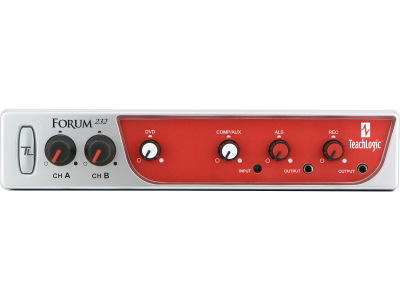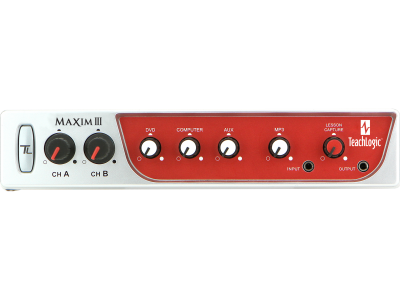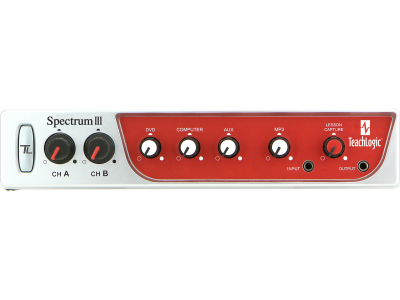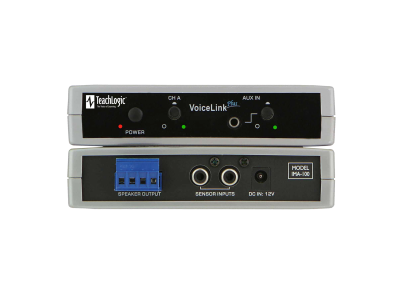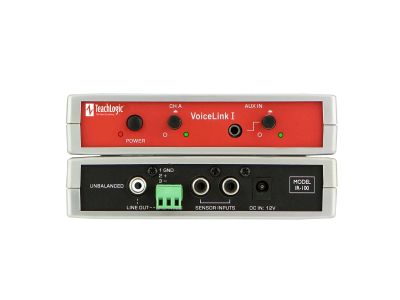A “Classroom Sound Field System” is essentially a small public address sound system, designed for the confines of a typical classroom of 20-30 students.
A complete Sound Field system evenly distributes all classroom audio sources so every student hears equally well.
Wireless Microphones
From a hardware standpoint, the system usually consists of two wireless microphones. A hands-free, pendant mic is ideal for the teacher, and a second handheld mic is generally used by students. Most Sound Field systems use infrared (IR) or radio frequency (RF) wireless technology.
Infrared is based on pulsating light, the transmission of the wireless mics will not penetrate the walls of a classroom into another room. This allows us to set up dozens or even hundreds of classrooms very close to each other with no interference. RF systems use dozens of “channels” to ensure classrooms don’t experience interference.
Amplifier/Receiver/Mixer
The amplifier and microphone receiver are usually combined into a single unit that also features a built in “mixer” that will also be able to amplify audio from such sources as a computer, projector, display, or smart phone.
Speakers
Think of speakers like light bulbs. For even coverage, you wouldn’t use just one or two to cover the entire classroom. The same goes for speakers. The main problem that students encounter while trying to listen to instruction is that they are simply too far from the teacher’s voice and the classroom can be a noisy environment. And adding just one speaker to the classroom isn’t enough to fill the entire room.
A typical K-12 classroom is 30 ft x 30 ft w/ 10 ft ceilings. The ideal Sound Field system in this environment is four overhead, ceiling-height speakers to evenly distribute the sound. Ideally, every student should be listening at a distance of about 6 feet from the nearest speaker.
Want to learn more? Click below.



